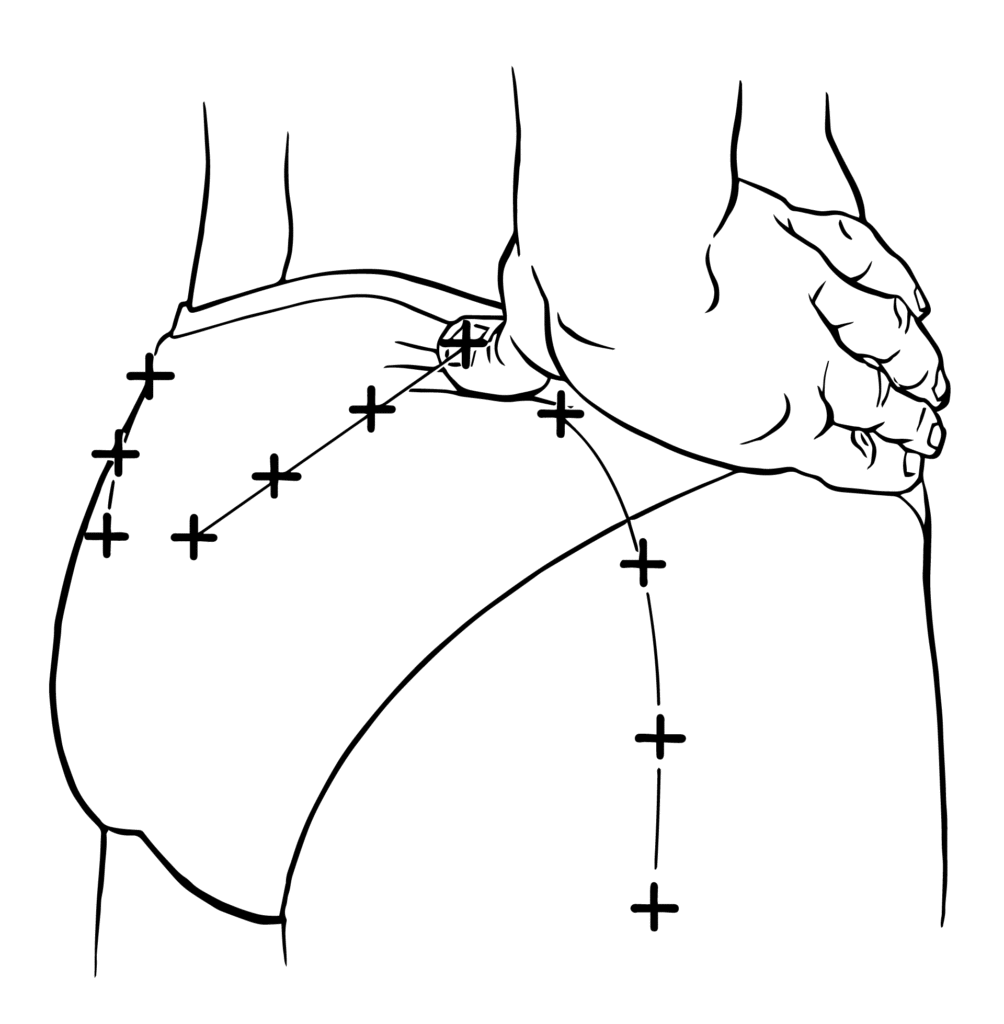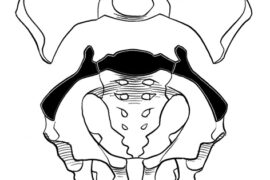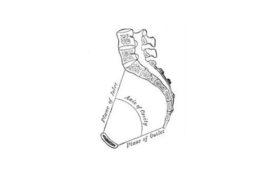Do you have pubic, hip or low back pain?
You may have pelvic girdle pain…
Are you pregnant, or postpartum? Do you have pain in the low back, pubic or groin area, side of hips, tailbone, buttocks or back of the thigh? If so, those achy hips might be pregnancy related pelvic girdle pain (PGP), a common concern that affects pregnant and postpartum women. You can find information about PGP on this website. It is our hope that you will find this and our free app very helpful. PGP is treatable: read on to find out how.

How do I know if I have pelvic girdle pain?
Test yourself
The following exercises are difficult to do with pelvic girdle pain (PGP).
Exercise 1: Leg Lifts (step 1)
Lie on your bac k and stretch out your legs. Try to lift one of your legs a few inches and put it down again. Do the same with the other leg. Both legs should feel light and easy to lift, if you have do not have PGP.
k and stretch out your legs. Try to lift one of your legs a few inches and put it down again. Do the same with the other leg. Both legs should feel light and easy to lift, if you have do not have PGP.
Exercise 1: leg lifts (step 2)
If the previous exercise is difficult; if it hurts, or if you can not lift your leg easily, try to lift your leg while pushing the sides of your hips together with your hands. Is this easier? If so, then we know that extra support or compression given to the pelvic ring is helpful. Your symptoms may a result of increased motion of your sacroiliac joints and / or the pubic joint (normal in pregnancy), and lack of adequate muscle compression or support.
Exercise 2: mat test
Try moving a small object with your foot, such as sliding a piece of paper on the ground. If you feel pain in your low back or groin area, you may have PGP. We need good, coordinated support of our pelvis to use our foot in this way.
Exercise 3: Spreading your legs apart.
 Lie on your back. Bend your knees, but keep your feet flat on the floor. Try to move knees apart towards the floor, bringing the soles of your feet together. For someone with pelvic girdle pain, this exercise can range from uncomfortable to extremely painful. You may feel pain in the pubic bone, or inner thighs, behind your hips and buttocks, or in your low back. Women with PGP have often lost hip and pelvic range of motion into this position. Although it may seem difficult or painful to do, we know that restoring this range is very helpful in improving PGP.
Lie on your back. Bend your knees, but keep your feet flat on the floor. Try to move knees apart towards the floor, bringing the soles of your feet together. For someone with pelvic girdle pain, this exercise can range from uncomfortable to extremely painful. You may feel pain in the pubic bone, or inner thighs, behind your hips and buttocks, or in your low back. Women with PGP have often lost hip and pelvic range of motion into this position. Although it may seem difficult or painful to do, we know that restoring this range is very helpful in improving PGP.
Exercise 4: Sit on a hard chair for a while.
Sitting after a certain period of time (e.g. after 15 minutes) is often painful for women with PGP. If you get pain in your tailbone, this may be caused by tension in the pelvic floor muscles, pulling the tailbone at an angle.
Find a therapist
If you need help, check out our listing of certified therapists who have trained in the Rost Therapy™ method worldwide. Many of our certified therapists have additional qualifications, such as pelvic floor physiotherapy, manual therapy, or osteopathy.











